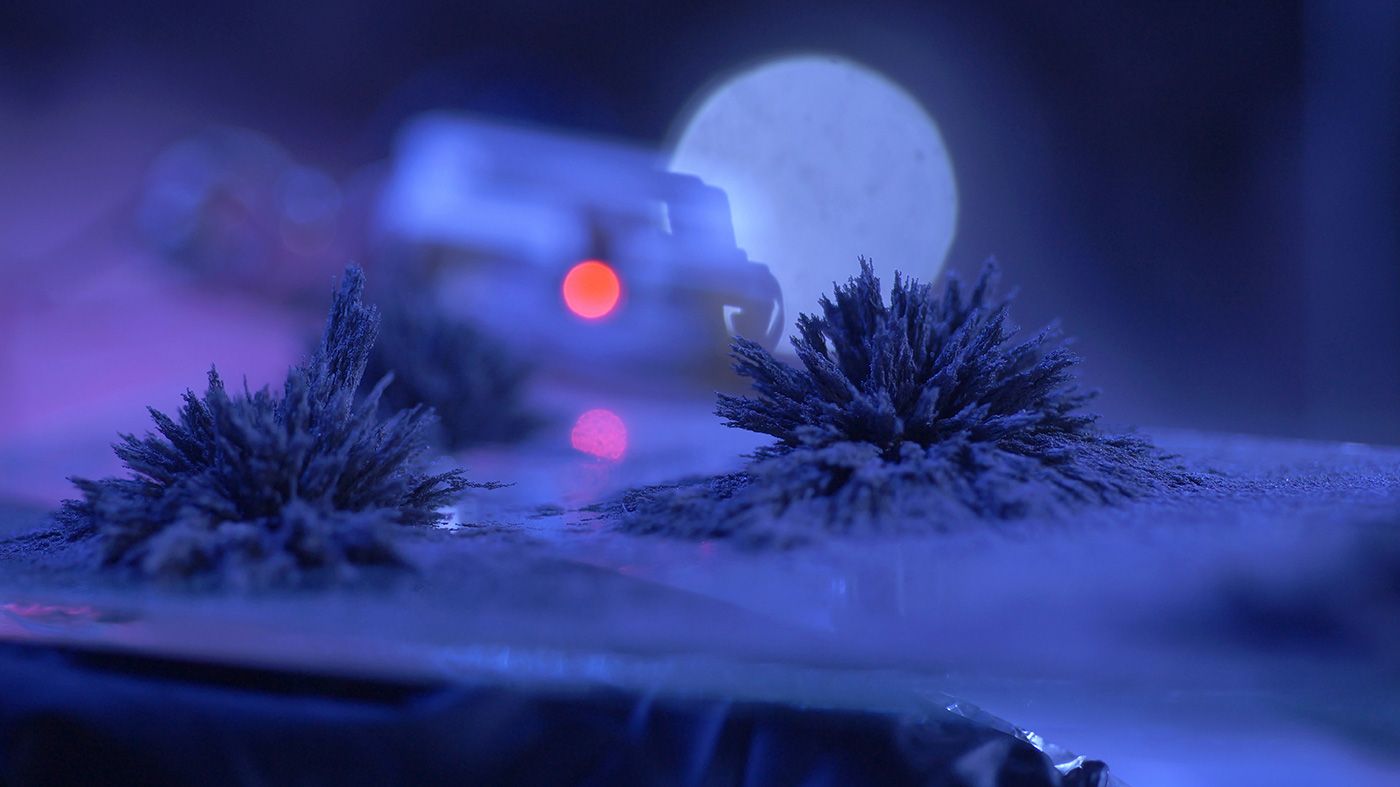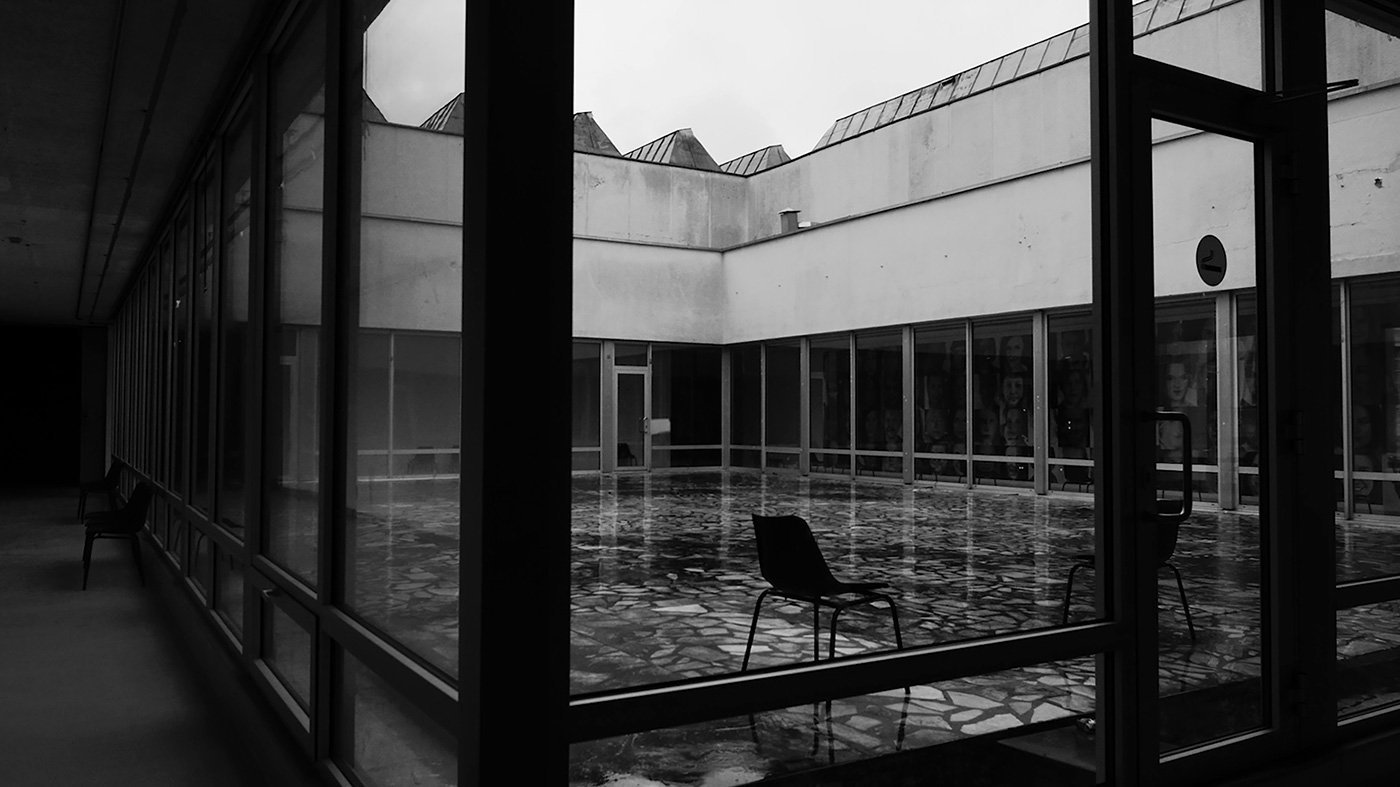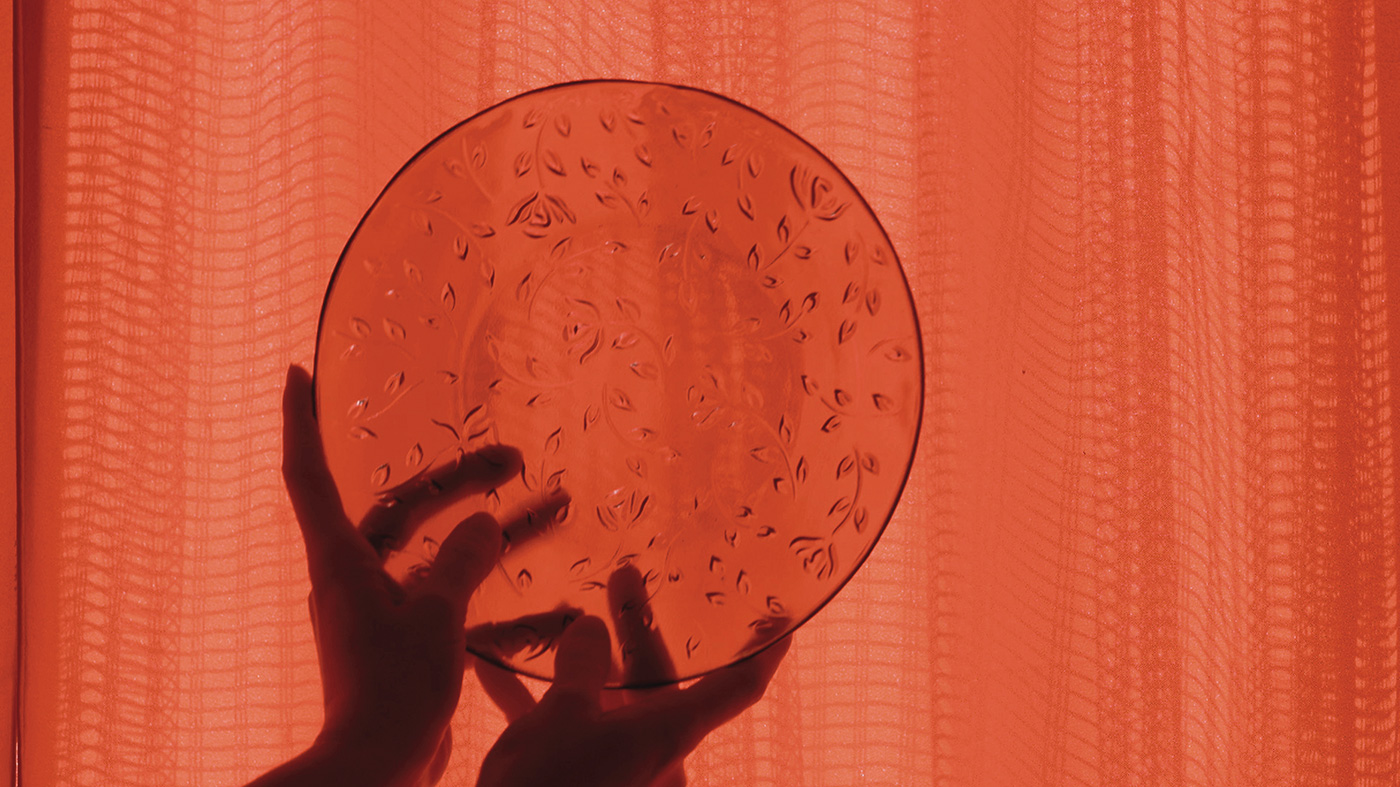“Bajo el cielo cayendo (Under the Falling Sky)” constructs a miniature world within a maquette, where staged disasters—human-made accidents and ecological collapse—coexist with fragile scenes of emergent life. Filmed in a single continuous take, the camera glides through this microcosm in a meticulously choreographed sequence, spiraling in a 360-degree orbit that mirrors the cyclical motion of life and cosmic systems. This rotation dissolves the boundaries between catastrophe and renewal, embracing how mediated images can both obscure and reveal the layered narratives of crisis. Raw, unfiltered visuals merge with theatrical artifice: landscapes oscillate between decay and rebirth.
The work aligns with the overwhelming flux of crisis narratives by “dressing” disaster in symbolic ambiguity. As the camera navigates burning forests, frozen wastelands, and deserted terrains, it oscillates between revelation and concealment, transmuting debris into metaphor. The maquette mirrors systemic collapse—its choreographed chaos echoing the rhythmic pulse of global crises—while simultaneously cradling latent possibility. Within this controlled entropy, Under the Falling Sky unearths seeds of potential, suggesting that beneath the familiar images of disaster lie narratives waiting to be reclaimed and reimagined.
Part of the series “Bajo el cielo cayendo (Under the Falling Sky)”, which reconfigures apocalyptic visual language as a site of reinvention.
Biography
Sebastián Díaz Morales was born in Comodoro Rivadavia, Argentina, in 1975 and lives and works in Amsterdam, The Netherlands. He attended the Universidad del Cine de Antin in Argentina from 1993-1999, the Rijksakademie van Beeldende Kunsten in Amsterdam from 2000-2001, and Le Fresnoy, Roubaix, France from 2003-2004. Diaz Morales’s conception of reality has been shaped by the living conditions and landscape of his birthplace, Comodoro Rivadavia, an industrial city located on the Atlantic coast, in a rugged area between the Atlantic Ocean and the Patagonian Desert in southern Argentina.
His work has been exhibited widely at venues—such as the Tate Modern, London; Centre Pompidou; Stedelijk Museum and De Appel, Amsterdam; Le Fresnoy, Roubaix; CAC, Vilnius; Art in General, New York City; Ludwig Museum, Budapest; Biennale Sao Pablo; Biennale of Sydney; Miro Foundation, Barcelona; MUDAM, Luxemburg; Calouste Gulbenkian Foundation, Lisbon; the Biennale di Venezia and Documenta Fifteen.
His works can be found at the collections of the Centre Pompidou; Tate Modern; Fundación Jumex, Mexico; Sandretto Foundation, Torino; Lemaître’s collection; Constantini collection, Buenos Aires; Pinault Foundation, Paris; Sammlung-Goetz, Munich; and the Fundacion de Arte Moderna, Museo Berardo, Lisbon between others. In 2009 he was awarded with a Guggenheim Fellowship.
Díaz Morales’s questioning of reality in film, whether concerning landscape, the urban, or even the sociopolitical, has been marked from the very outset by a fundamental distrust of the belief in a single, unified reality. With Díaz Morales, the camera does not function as a medium for faithfully depicting and recording what is observed, but is an essential, even epistemic means for questioning and appropriating reality.
His examination of perception and reality is based on the assumption that reality itself is by nature highly fictional. Thus, his films do not simply transport the viewer into another, surreal, or phantasmal realm, but they strip reality of its familiarity and distort it, making it seem like something else. With Diaz Morales, the viewer’s imagination does not function as a basic counterpart to the real. Rather, it operates as a force capable of evoking space and producing it diegetically, one that, beyond generating a direct visual impression, fills in the gaps in seeing and, as the film unfolds, gradually reveals to the viewer the constructedness of what we call reality. Reality is presented here as a phantasm, as something that always eludes its defining in images. It is therefore always “a little bit ahead” of the image and the viewer’s gaze. (Adapted from an article by David Komary)



